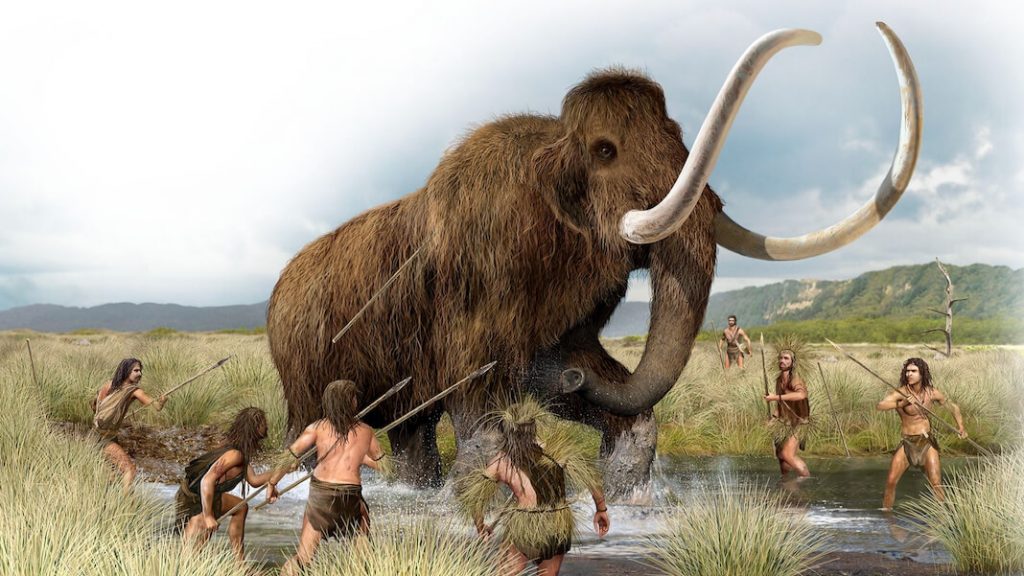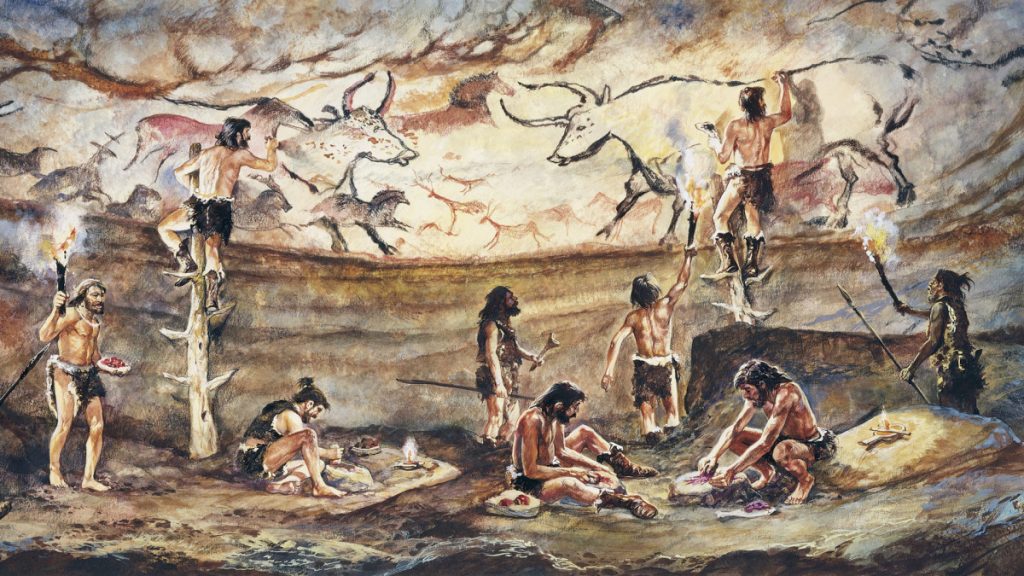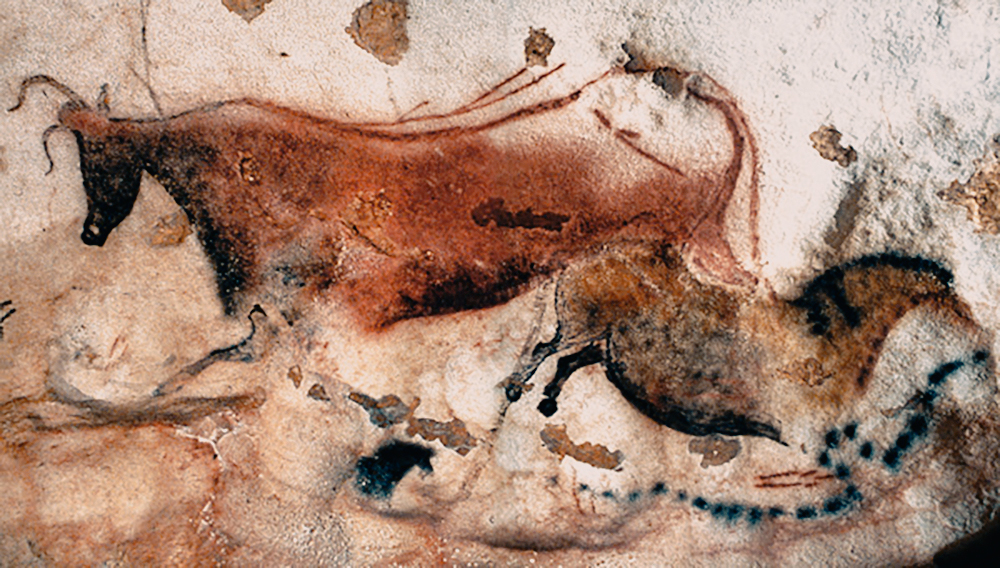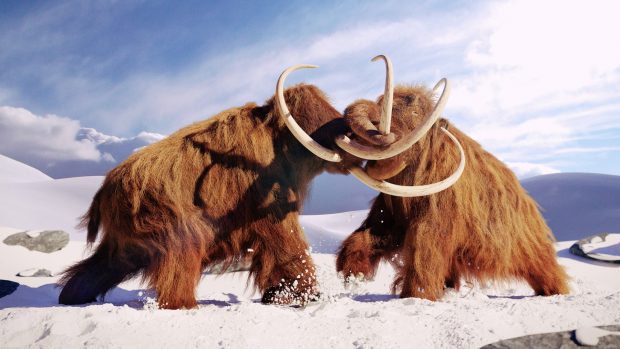The weather of the earth is always changing. Over the last two million years, the planet’s temperature has moved up and down. A series of warm periods occurred between the cold Ice Age epochs. The last of the Ice Ages reached its peak around 18,000 BC. This peak period (30,000-12,000 BC) is so important in human history that it has always been known as the Ice Age. Humans were dispersed over much of the world at the beginning of the last Ice Age. Throughout this period, layers of ice were rolling down from the north, covering large areas of the globe. Regions such as Scandinavia, Siberia, and northern England had become uninhabitable for humans.
During this period, much of northern Europe was covered by intermittent tundra. Spain, Greece and most of the Balkans were covered with forests. In Russia, there was a large meadow area in the region north of the Black Sea. This variable habitat was a problem early humans had to contend with. People had to adapt to different conditions. Big game hunts were on the move across the plains of Russia. Hunter fishermen lived on the tundra and on the edges of ice sheets. Hunters and food gatherers had built shelters in the forest. To adapt to these diverse living conditions, humans had to develop different tools, hunting techniques, and social skills.
Life and tools in the Ice Age
Ice Age tools were more variable than tools used by people living in earlier periods. People living in the Ice Age still used stones as knives and scrapers. On the other hand, the use of bones and horns increased in this period compared to previous periods. They had discovered how to use the horn to make strong handles for stone blades and ax heads. They carved bones for needle making, which was essential for sewing leather and hides for thick clothing.



Humans still hunted large mammals such as the woolly mammoth. They also learned to follow and hunt herd animals such as reindeer. This provided them with a rich source of hides, meat and horns. Ice Age people were the first traders to exchange food and supplies as resources were scarce. For example, flints and furs were exchanged for food during times of famine. People had traveled more; encountered other groups and possibly found new food sources. Keeping in touch with other tribes was an aid to survival. There needed to be a leader who would act as a spokesperson when different groups met. This was also the time when personal decorations first began to matter. A bone necklace or shiny body paint could mark the leader of a group.
Ice Age world
The Ice Age made life difficult in many places. The cold wasn’t just uncomfortable, it meant that some plants could not survive. Also, few or no trees in many areas meant that people did not have wood to build shelter. These difficulties compelled people to find new ways of life. They had to experiment with new foods (like fish) and new materials (like bone and horn).
Mammoth hunt in the Ice Age



Large, fierce, and with two powerful tusks, woolly mammoths had an awe-inspiring appearance to Ice Age humans. But these dangerous creatures were such a good source of meat, skin, bone, and teeth that people risked injury or even death to hunt them down.
Reindeer
There are many defensive tools, harpoons and carvings made from horns. It indicates that these reindeer-like animals were hunted throughout Europe during the Ice Age. Besides reindeer hides, bones and antlers, it provides tasty, nutritious meat.
Harpoon bits
Ice Age hunters used harpoons to hunt seals and to catch salmon in rivers. It took a long time to carve the harpoon tips out of antlers, but it was well worth it.
Heat source in the Ice Age
In cold and humid climates, fire became much more important as a source of heat. Creating sparks by rubbing sticks together and making a fire spread throughout Europe during the Ice Age.
Important dates
- Between 32,000 and 28,000 BC, the Auriancian culture in Western Europe produced flint scrapers and sharpened blades.
- 30,000-12,000 BC The main period of the Last Ice Age.
- By 24,000 BC European hunters and gatherers had built permanent dwellings.
- By 20,000 BC, hunters in Western Europe had developed spears and spear throwers. Hunters in Poland used mammoth tusk boomerangs.
- The peak of the Ice Age 18,000 BC.
- 18,000-12,500 BC The people who settled near Kebara Cave, Israel, made grinding stones. This reveals that they were collecting and processing wheat.
Ice Age art
Prehistoric cave paintings found in Europe showed a wide variety of creatures. These include wild horses, herds of reindeer and aurochs, wild cats, birds and mammoths. The animals are shown in action, with animals galloping and fleeing while being chased by human hunters on the cave walls. These are dramatic action pictures, but produced in the dark, dampness of cold caves. Ice Age artists made sculptures and modeled clay figures. They made reliefs on cave walls and carved animal models into antlers and mammoth tusks. Paintings and sculptures are often hidden so deeply in underground burrows that many of them were not rediscovered until the 1900s.



It is not known why the pictures were stored this way. In fact, there is no real information about why the paintings were made. Most experts agree that painting probably has some religious motive. They may have been used in magical ceremonies designed to aid hunters or contribute to fertility. Sometimes there are several different sketches in the same place, one over the other. This makes it very difficult to see some of the cave paintings and carvings. Experts spend a lot of time redrawing the sketches in their notebooks to make them more specific. For the prehistoric artist, the act of making the image was much more important than a completed image. Perhaps the actual process of painting or carving was part of the ritual.
Ice Age painters used clay for white, charcoal for black, ocher, a type of earth, for yellow, and iron oxide for red. Artists sometimes made use of minerals they could heat to make other colours. Pigments were mixed with water and applied to animal fur felts, animal hair brushes or simply the painter’s fingers. Another technique was to create a simple spray effect by spitting the paint out with the mouth or through a reed. Artists used oil to illuminate the cave and sometimes built untreated wooden frames to add extra height while working. With these simple techniques, Ice Age artists produced surprisingly complex images for such a simple ensemble.
Cave paintings – Lascaux
We do not know why Ice Age artists painted and sculpted; It is difficult to decide what meaning their work means to them. Important animals and what the natural world looked like to them are shown. Cave paintings reveal the kinds of animals these people ate and hunted, as well as which creatures they thought were the strongest. These images and small carvings of the period also give some clues about Ice Age beliefs.



Of all the prehistoric paintings in the cave, known as the Lascaux cave complex in France, it contains perhaps the most marvelous of the cave paintings. Discovered in 1940, it shows a large number of animals, including reindeer and horses. These finely drawn, brightly colored paintings began to suffer in 1960 due to the negative impact of the large number of visitors on the cave atmosphere, a replica now called Lascaux II can be visited.
Venus statuette
Carvings of female figures with large hips and waists have often been found at Ice Age sites. Archaeologists named them “Venus”, after the Roman goddess of love, as they thought they were the fertility goddesses.
Ivory head
This female head carved in ivory, found in France, depicts a goddess. Goddess figures have been found in many parts of Europe, from France to Russia; then we can say that the goddesses were probably the most important deities in Ice Age religion.
Making paint
Artists have found their colors in soil and rocks. They mixed soil and minerals in a medium such as water or animal oil and produced a type of spreadable paint. It could be drawn directly onto the surface of the rock with a piece of charcoal (burnt wood) or limestone.
Lamp
Numerous rock paintings are hidden in dark, underground caverns. Artists needed light to see what they were doing; therefore they used stone lamps or fire, burning torches. The animal fat burned in the lamp, giving off a bright but fragrant flame. Archaeologists have found several hundred Ice Age lamps.
Important dates
- 30,000 BC The earliest European cave painter.
- 30,000 BC European musicians made flutes from animal bone fragments.
- 23,000 BC The first cave paintings were made in the Dordogne region of France.
- Venus statuettes were made in 23,000 BC in France and Central Europe.
- 18,000 BC The main period of cave painting in caves in Lascaux, France and Altamira, Spain.
- 11,000 BC The period of cave painting is over.
Source: The History – Encyclopedia Follow the Development of Human Civilization from Prehistory to the Modern World, With Over 1500 Photographs and Illustrations – Simon Adams, Philip Brooks, John Farndon, Will Fowler, Brian Ward.
